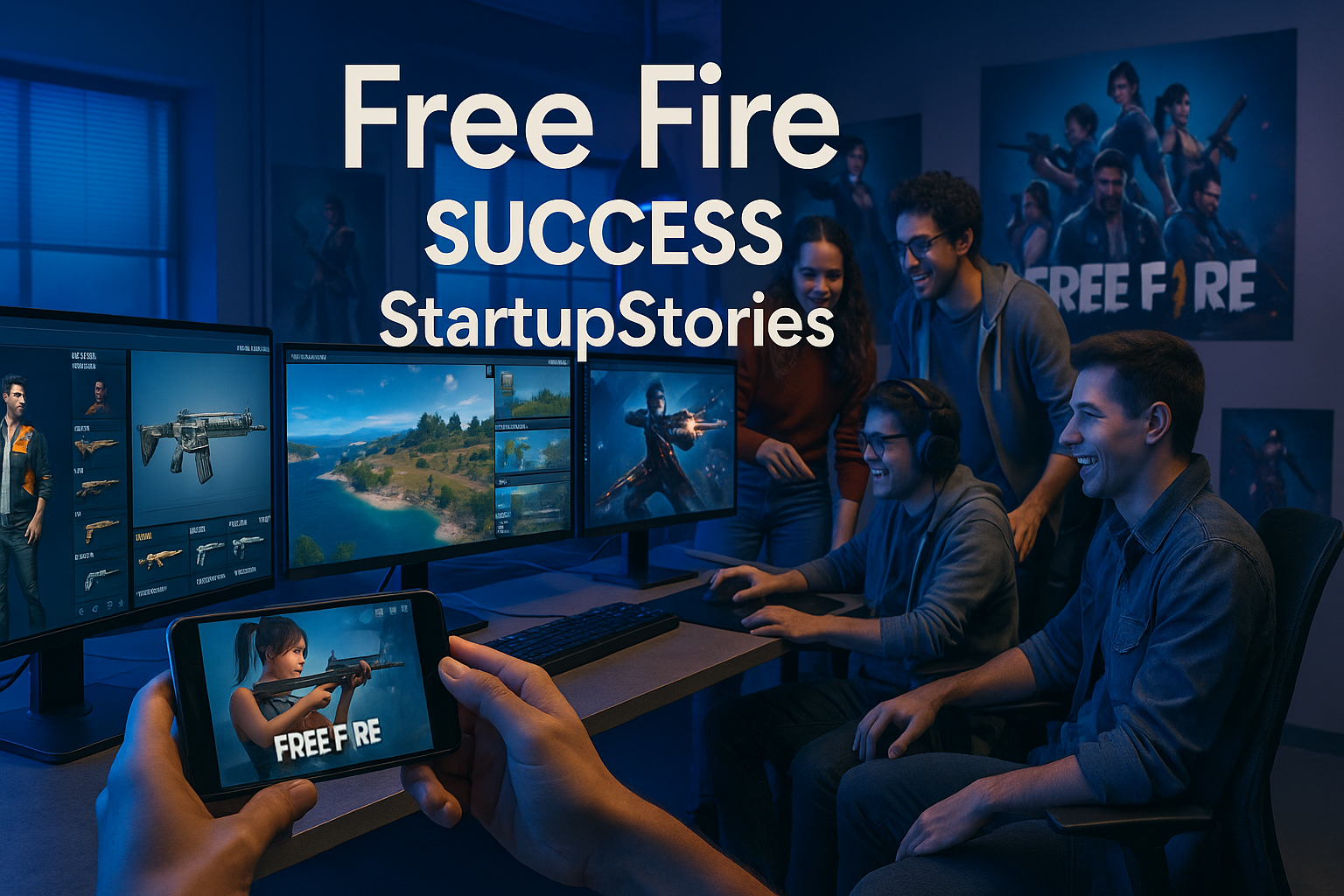In the world of mobile gaming, few titles have made as explosive an impact as Free Fire. Developed by 111 Dots Studio and published by Garena, Free Fire rose from humble beginnings to become a global sensation, boasting over 80 million daily active users. Its journey is one of innovation, accessibility, and strategic execution—a true gaming revolution.
Rise of the Gaming Industry in India
India's gaming industry has seen tremendous growth, driven by affordable smartphones, low-cost data, and a young population. Battle royale games like PUBG Mobile and Free Fire captivated millions, particularly the mobile-first generation. The surge in casual and competitive gaming also opened doors for job creation and investment opportunities in game development and esports.
The Beginning of Free Fire
Launched in 2017 as Free Fire – Battlegrounds, the game was developed by Singapore-based 111 Dots Studio. While initially overshadowed by larger titles like PUBG and Fortnite, Free Fire focused on something others ignored—optimization for low-end smartphones. This strategic decision gave it a strong foothold in emerging markets where access to high-end devices was limited.
Key Gameplay Innovations
Free Fire took the traditional battle royale format and added its own flavor. Players are dropped onto an island to compete for survival, but several unique features set Free Fire apart:
-
Shorter Matches: Quick 10-minute matches made it appealing for mobile users on-the-go.
-
Character Abilities: Each character has distinct skills, introducing strategy into the game.
-
Frequent Updates: New characters, maps, and game modes kept users engaged.
-
In-Game Currency System: Allowed players to unlock cosmetics and items, enhancing personalization and monetization.
Marketing, Accessibility, and Community
Garena’s aggressive regional marketing and localization strategies helped Free Fire thrive in diverse markets. By supporting multiple languages and offering region-specific content, the game connected with players globally. It also actively engaged with its community, hosting in-game events and gathering feedback to guide updates.
Free Fire and Esports
Free Fire embraced esports early, launching competitive leagues and tournaments worldwide. With significant prize pools and professional teams, Free Fire helped elevate mobile esports into the mainstream. Events like Free Fire World Series gained massive viewership and further legitimized mobile competitive gaming.
The Impact on the Gaming Industry
Free Fire has made a lasting impact on the gaming world:
-
Mobile Gaming Revolution: Proved mobile games can be as successful and engaging as PC or console titles.
-
Global Accessibility: Its lightweight build set a new standard for gaming across low-end devices.
-
Inspired Competitors: Encouraged other developers to innovate and optimize their games for mobile platforms.
-
Localization Model: Became a benchmark for how localization can drive global success.
Free Fire vs. Its Rivals
Free Fire competes with major battle royale games, each with its own strengths:
-
PUBG: Known for realistic gameplay and larger maps but requires more powerful devices.
-
Fortnite: Offers building mechanics and vibrant visuals but demands higher hardware specs.
-
Apex Legends: Introduces team-based strategy and respawn features, appealing to tactical players.
-
Call of Duty: Warzone: Delivers gritty realism and massive maps with cross-platform play.
-
Valorant: Though not a direct rival, it highlights the rise of FPS games blending tactics and team play.
Wrapping Up
The Free Fire success story is one of vision, execution, and community. What started as a lightweight alternative to big-budget battle royale games quickly turned into a global force in mobile gaming. By focusing on accessibility, frequent innovation, and regional relevance, Free Fire didn't just compete—it dominated. Its journey serves as an inspiration for indie developers and a blueprint for creating user-centric gaming experiences.
Frequently Asked Questions (FAQs)
Q1. What makes Free Fire different from other battle royale games?
Free Fire features shorter match durations, unique character abilities, and low device requirements, making it ideal for quick, casual gameplay on mobile.
Q2. How did Free Fire achieve global success?
Through a mix of accessibility, strategic localization, frequent updates, and active community engagement, Free Fire gained mass appeal worldwide.
Q3. Is Free Fire popular in esports?
Yes, Free Fire has a thriving esports ecosystem, with international tournaments, professional teams, and millions of viewers globally.
Q4. Can Free Fire run on low-end smartphones?
Yes, it’s optimized for performance on devices with lower specs, which has made it popular in markets like India, Brazil, and Southeast Asia.
Q5. What are Free Fire's most notable competitors?
Free Fire competes with PUBG Mobile, Fortnite, Apex Legends, and Call of Duty: Warzone, each offering different gameplay styles and system requirements.
